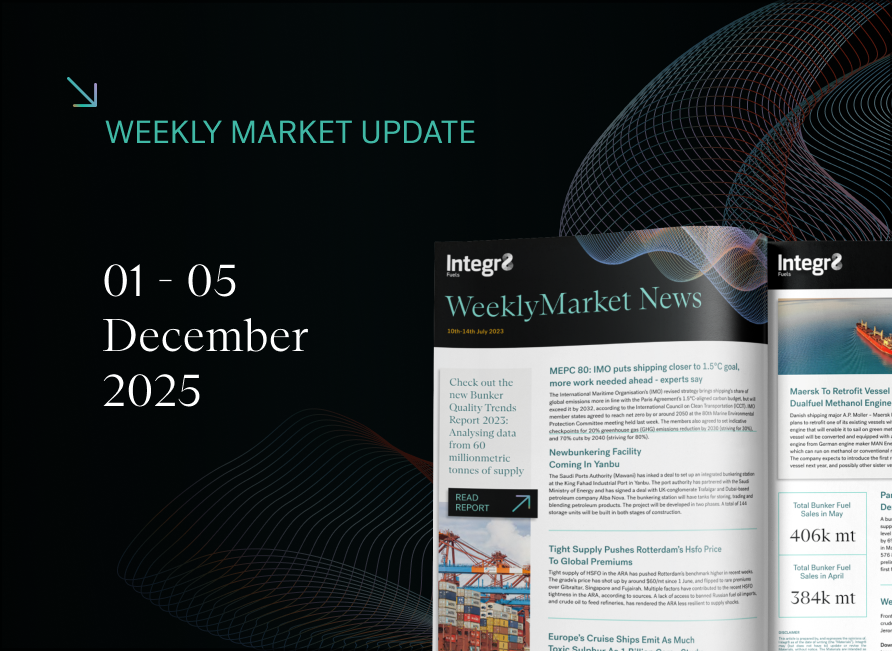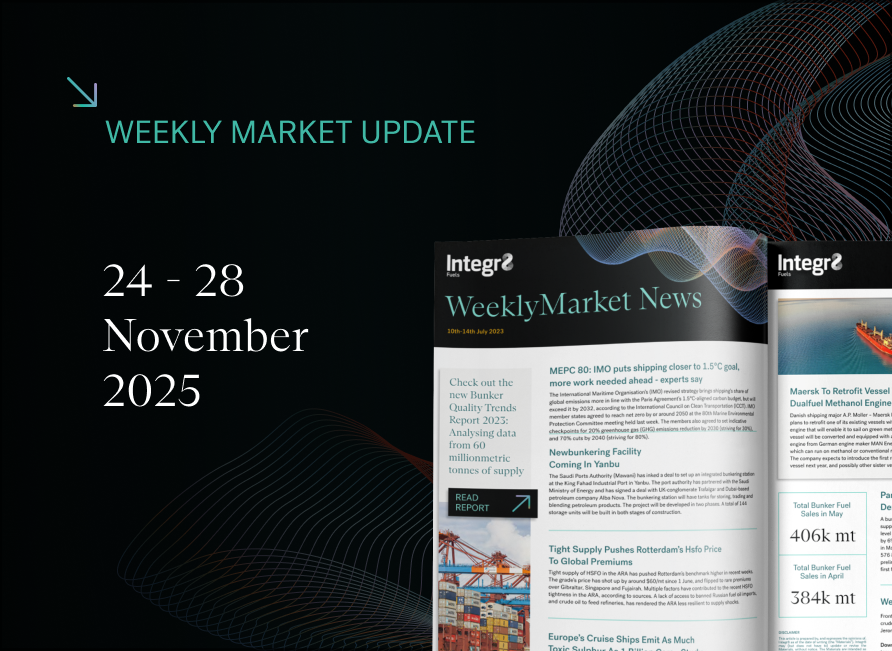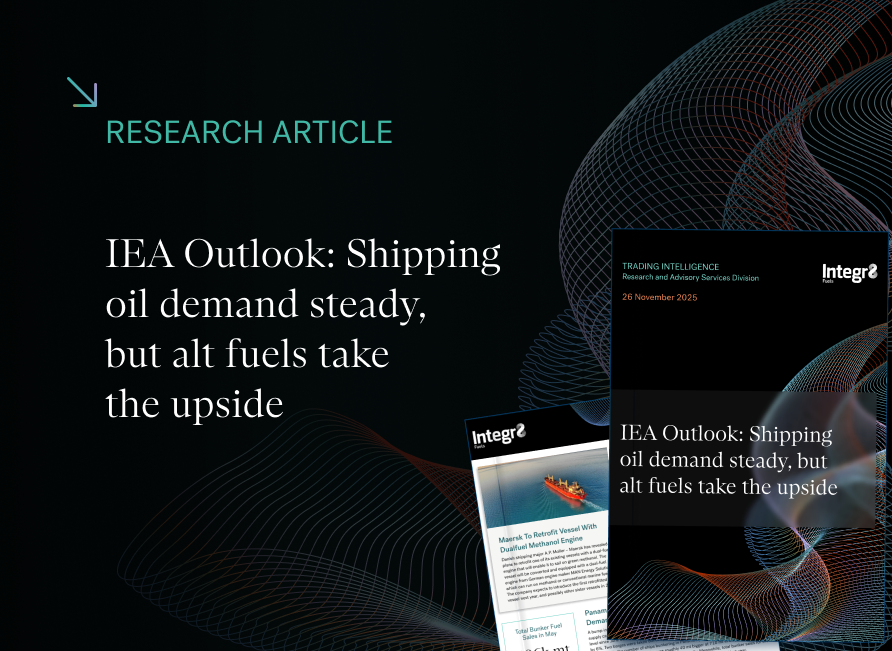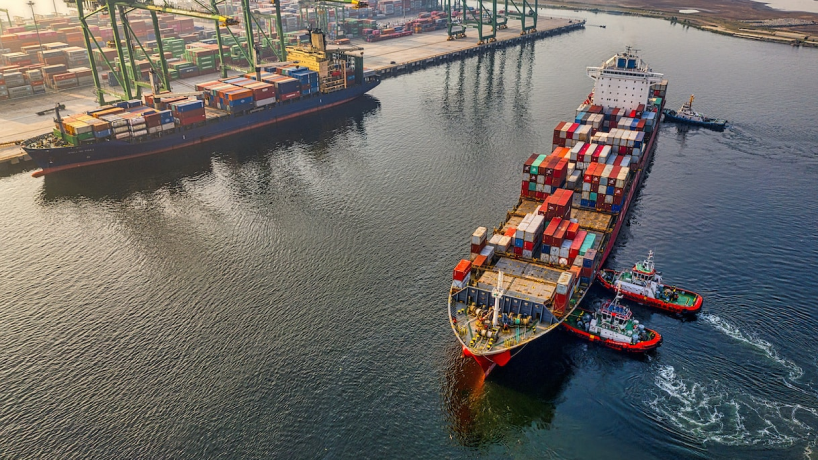Report reveals Red Sea closure’s impact on VLSFO compliance, and emerging bunker quality trends
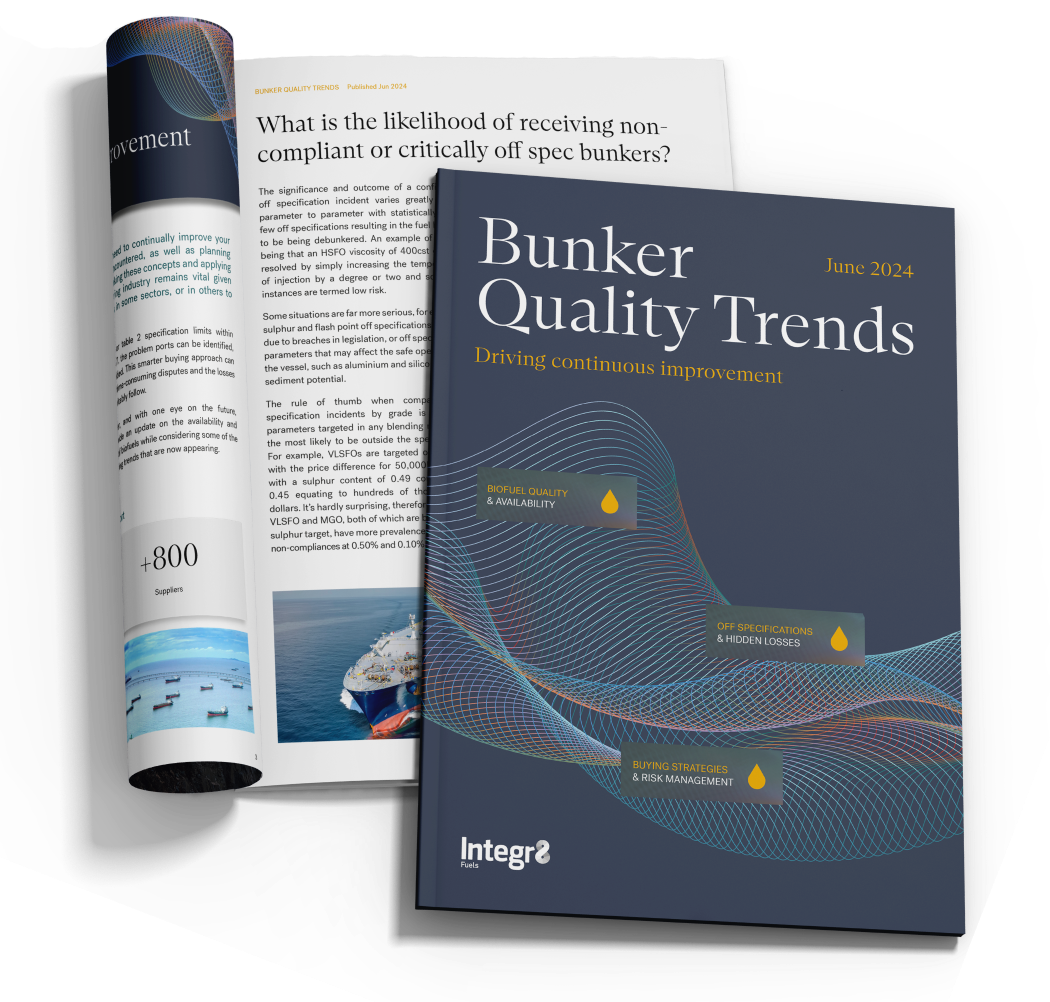
This is the fourth bi-annual report analysing the bunker fuel landscape
In the latest report from Integr8 Fuels, bunker quality and claims manager Chris Turner advises shipowners and bunker buyers on how they can improve their buying processes and performance. Tapping into the world’s biggest bunker fuel quality sample database, Turner reveals the most pressing quality issues the industry is up against. These include:
- Red Sea closure affecting VLSFO compliance for vessels rerouting around Africa
- Global VLSFO compliance suffers as suppliers stretch barges to cash in on rising HSFO demand, driven by increasing scrubber numbers
- Two-thirds of fuels are still sold with obsolete (pre-2017) specifications. Can the new ISO specs finally shake up old school practices?
- Profit margin-motivated blenders push more HSFOs over ISO limits
- VLSFO sulphur off specs worsening in the ARA and partly driven by high- to low sulphur barge switching
Red Sea closure impact on VLSFO compliance
Geopolitical events often have a knock-on effect on fuel quality, sometimes relating to blending economics, and occasionally, also relating to the impact on barge infrastructure because of rapidly changing demand.
Since October 2023, many more vessels have been rerouting around Africa rather than travelling via the Red Sea, resulting in a significant increase in volume of HSFO demand, with . During the same period, there has been a 30% increase in VLSFO sulphur off specification incidents in ports along the African coast and nearby Spain, which upon closer inspection, show a root cause of affected barges also carrying HSFO.
Integr8 Fuels’ analysis has identified suppliers running a similar model who are unaffected – this likely due to their infrastructure allowing double valve segregation and separate manifolds onboard the barge preventing any cross-over contamination, and/or proper management of grade changeover.
The increase in HSFO demand is also putting pressure on supply models.
Another factor is the significant increase in the number of vessels equipped with scrubbers, resulting in a far higher demand for HSFO than in recent years with data available to Integr8 suggesting approximately 100 million MT of deadweight tonnage being either delivered or retrofitted with scrubbers in 2023. This combined with the price spread which remains very appealing, and scrubber assets travelling further at higher speeds, continues to support the demand going forwards.
Suppliers of course want to meet this increased demand and in doing so place transitional temporary pressure on existing assets or could be forced into a sea change in strategy, both of which may result in the practice of storing both HSFOs and VLSFOs onboard the asset.
This is made apparent by increased sulphur off specification occurrences with the root cause being the switching of grades by certain suppliers, in ports including but not limited to Barcelona, Callao and Hong Kong.
New ISO specs
The International Organization for Standardization’s (ISO) recently launched ISO 8217:2024 standards present a rare opportunity to do away with the industry’s reliance on obsolete fuel specifications. This is no easy task as research from Integr8 shows that two-thirds of residual bunker fuels and three-quarters of distillate bunker fuels are still sold with pre-2017 specifications.
ISO 8217:2024 introduces several important amendments. Notably, it sets minimum viscosity limits across all residual grades, addressing handling issues with low-viscosity fuels. It also identifies specific chemical species linked to operational problems, such as organic chlorides, and incorporates international testing standards. The new specification prepares the industry for the growing use of biofuel blends by establishing new testing parameters for these fuels, such as FAME content and net heat of combustion.
There are however missed opportunities, namely related to de-minimis levels of organic chlorides and cold flow properties.
Suppliers may again attempt to avoid the small print on organic chlorides as they have previously done with Clause 5, which could possibly have been better addressed by incorporating a maximum limit in tables. Cold flow properties must only be reported, not guaranteed, leaving the potential need for buyers to seek additional guarantees outside ISO 8217:2024. This remains a concern as certificates of quality (where such values are reported) often lack reliability when provided at a distant time from delivery.
Despite these challenges, the ISO 8217:2024 specification represents a substantial step forward, providing the necessary framework to address many current fuel quality issues. The uptake of the 2024 specification will depend significantly on ship owners demanding these new standards be incorporated into charterparty agreements. By doing so, owners can drive the transition from outdated specifications to the latest version, paving the way for a more reliable and efficient future in marine fuel standards.
Global HSFO off specs
Global HSFO quality has worsened in the past six months. The number of off-specification HSFO samples has gone up from 3% to 3.4%, and this is significantly higher than for VLSFO (2.1%) and MGO (2.8%).
Profit-motivated blending can go some way to explain the deteriorating HSFO trend. Almost half of HSFO off specs have been blending-related and come as a result of blending close to HSFOs density and viscosity limits, Turner argues. Water content is the second most likely usual off spec suspect and has made up around a third of HSFO off specs.
But fortunately, neither density, viscosity nor most of the water off specs qualify as so-called “critical” or “high risk” off specs. They are not likely to lead to serious engine trouble or debunkerings, which can cost shipowners dearly. These off specs are typically economically motivated. Density and viscosity off specs are more common for HSFO than for VLSFO and LSMGO because they are the blending targets for HSFO, and blenders have an incentive to blend as close to those limits as possible to save money.
VLSFO sulphur off specs
Sulphur is the biggest off spec concern for VLSFO. Again, this has to do with blending as the 0.50% sulphur limit is the target that blenders have their eyes on. Blending too far from the limit can eat into your profit margins, and we have seen the average sulphur contents in VLSFOs creep up in both the ARA and Singapore in the past six months.
In Singapore, you were 2.5 times more likely get a VLSFO stem with a sulphur content of 0.51-0.53% in the past six months as you were getting one in the preceding six-month period. It is evident that blending is being optimised towards the 0.50%.
But while only 0.3% of VLSFOs test off spec for sulphur in Singapore, the ARA has seen 2% of VLSFOs testing off spec. In the ARA, “we regretfully report that we are almost twice as likely to face a sulphur off specification incident now than in the previous reporting period,” Turner writes.
The report is available to download for free from the Integr8 website at https://integr8fuels.com/fuel-quality-trends-2024/
Media Contact:
Angela Freeth, angela.f@integr8fuels.com


Contact our Experts
With 50+ traders in 12 offices around the world, our team is available 24/7 to support you in your energy procurement needs.

